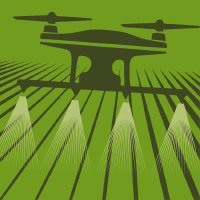Topic Menu
► Topic MenuTopic Editors

Research Progress in Key Technologies of Planting and Harvesting Machinery
Topic Information
Dear Colleagues,
According to the local site conditions of crops, planting and harvesting technology and equipment that meet the technical requirements of crop agricultural production have been the main research fields of crop mechanization production.
The aim of this Topic is to review the key technologies and advances in mechanized planting and harvesting research and to publish the latest research results in this field. Papers should be innovative and highly targeted at key technology, with a strong academic foundation.
This Topic will focus on topics such as:
(1) Theory and new technology of soil–machine–crop interaction in mechanized planting and harvesting;
(2) Key technologies in each link of mechanized planting operation, such as seed treatment, seed coating, seed filling and discharge, seedling raising and transplanting, etc.;
(3) Key technologies of mechanized harvesting, such as harvesting lodged crop, reducing field loss, product damage reduction, removal of impurities, etc.;
(4) Key technologies of mechanized planting and harvesting in hilly and mountainous areas, such as automatic leveling technology of all-terrain chassis, light, simple and miniaturized design, etc.;
(5) Optimization design technology of planters and harvesters.
Prof. Dr. Qingting Liu
Topic Editor
Keywords
- planting
- harvesting
- machinery
- agronomy
Participating Journals
| Journal Name | Impact Factor | CiteScore | Launched Year | First Decision (median) | APC |
|---|---|---|---|---|---|

Agriculture
|
3.3 | 4.9 | 2011 | 20.2 Days | CHF 2600 |

AgriEngineering
|
3.0 | 4.7 | 2019 | 25.8 Days | CHF 1600 |

Agronomy
|
3.3 | 6.2 | 2011 | 15.5 Days | CHF 2600 |

Applied Sciences
|
2.5 | 5.3 | 2011 | 17.8 Days | CHF 2400 |

Machines
|
2.1 | 3.0 | 2013 | 15.6 Days | CHF 2400 |

MDPI Topics is cooperating with Preprints.org and has built a direct connection between MDPI journals and Preprints.org. Authors are encouraged to enjoy the benefits by posting a preprint at Preprints.org prior to publication:
- Immediately share your ideas ahead of publication and establish your research priority;
- Protect your idea from being stolen with this time-stamped preprint article;
- Enhance the exposure and impact of your research;
- Receive feedback from your peers in advance;
- Have it indexed in Web of Science (Preprint Citation Index), Google Scholar, Crossref, SHARE, PrePubMed, Scilit and Europe PMC.

